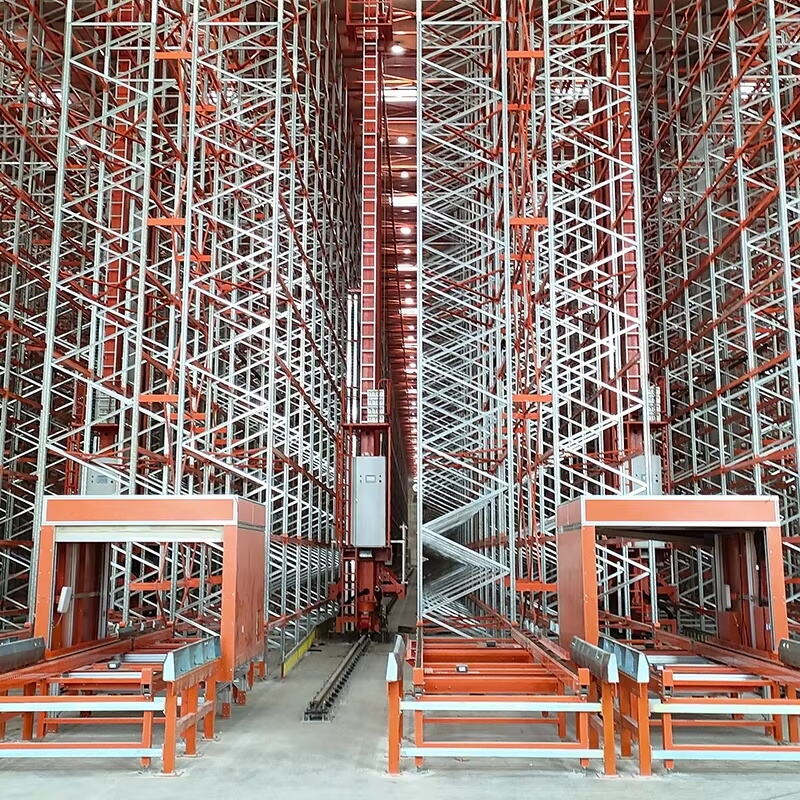The Evolving Landscape of ASRS Warehousing Automation
From Manual Systems to Intelligent Automation
The journey from manual systems to automated storage and retrieval systems (ASRS) marks a significant shift in warehousing efficiency. Traditionally, warehouses relied heavily on manual labor for storage and retrieval, which was not only time-intensive but also posed a higher risk of human error. However, the transition to automated systems has revolutionized this process. According to a recent study, ASRS can lead to a 30% reduction in labor costs, illustrating the cost-effective nature of automated solutions.
Several key components make up Automated Storage and Retrieval Systems, playing a vital role in modern logistics. These systems include unit load cranes, mini load systems, vertical lift modules, and shuttle systems, each tailored to specific storage needs. ASRS are particularly valuable as they utilize advanced software and robotics to increase retrieval speed and enhance space utilization. For instance, vertical lift modules are ideal for maximizing vertical space, while shuttle systems are efficient in high-density environments. As demand for seamless and efficient logistics increases, the adoption of ASRS is poised for further expansion.
AI & Machine Learning Revolutionizing Inventory Management
Predictive Analytics for Stock Optimization
Predictive analytics is transforming inventory management by analyzing historical sales data to predict future demand. By leveraging advanced algorithms, businesses can gain a comprehensive view of customer buying patterns, seasonal trends, and demand fluctuations. For instance, companies that have integrated AI-driven predictive analytics into their inventory systems have reported a 20% improvement in stock management efficiency. These insights allow businesses to minimize overstock scenarios, reduce stockouts, and ensure seamless supply chain operations. Advanced predictive tools enable businesses to maintain the right balance of inventory, optimizing costs and enhancing customer satisfaction.
Machine Learning in Demand Forecasting
Machine learning plays an instrumental role in refining the accuracy of demand forecasting, offering a substantial advantage over traditional methods. Businesses employing machine learning techniques have reported forecast improvements ranging from 15% to 30%, providing a competitive edge in the marketplace. These models, including time series analysis and neural networks, adapt and learn from data over time, allowing a company to anticipate customer needs more precisely. Specifically, in ASRS warehousing, machine learning optimizes storage solutions by forecasting future inventory requirements, thereby integrating seamlessly with automated systems to improve operational efficiency and responsiveness to market changes.
IoT Integration: Creating Smart Warehouse Ecosystems
Real-Time Equipment Monitoring Solutions
The integration of IoT in warehousing is crucial for monitoring equipment performance, which enhances operational efficiency. IoT devices provide real-time data that can drastically reduce downtime, with studies showing up to a 25% decrease in machinery downtime due to continuous monitoring. These devices can send alerts for maintenance and repairs, fostering a proactive management culture. By identifying issues before they lead to breakdowns, IoT ensures that equipment is always operating at optimal levels.
Connected Inventory Tracking Networks
IoT facilitates the creation of connected networks for real-time inventory tracking, revolutionizing warehouse ecosystems. Businesses implementing IoT in their inventory systems have reported significant improvements, such as increased accuracy in inventory counts, which enhances supply chain transparency and security. By connecting products, pallets, and racks, IoT technology ensures that inventory updates happen in real time, reducing discrepancies and improving operational efficiency. This interconnected approach not only allows companies to track items throughout the supply chain but also fortifies security protocols, ensuring that goods remain protected from the moment they enter the warehouse until they reach the end consumer.
Advanced Robotics: The New Workforce
Next-Generation AGVs with AI Navigation
Developments in Autonomous Guided Vehicles (AGVs) are notably revolutionizing warehouse operations, particularly with the integration of AI for enhanced navigation capabilities. AI-driven AGVs can process data and predict optimal routes, offering improved efficiency in navigation and task completion. Notably, the implementation of these AGVs has led to operational improvements, enabling about 40% faster pick processes, which significantly enhances throughput and productivity. Leading manufacturers, such as Daifuku Co., Ltd. and SSI SCHAEFER, are at the forefront of this AGV technology revolution, providing sophisticated solutions to meet the demands of modern warehouses. With advanced features like AI navigation, these companies facilitate ASRS warehousing and automation, greatly contributing to the evolving landscape of efficient and scalable warehousing solutions.
Collaborative Robotic Systems
Collaborative robots, or cobots, are transforming how warehouses operate by working alongside human workers to enhance productivity and safety. These robots are designed to assist with repetitive tasks, allowing human workers to focus on more complex activities. The inclusion of cobots in warehouse environments has been shown to increase productivity by up to 50%, according to various industry reports. Cobots are equipped with advanced sensors and adaptive algorithms that ensure safe interaction with humans and compliance with safety regulations, such as ISO/TS 15066. By implementing cobots, warehouses can not only achieve higher operational efficiency but also foster a safer working environment. This combination of technological advancement and regulatory adherence creates a compelling case for more widespread adoption of collaborative robotic systems in warehousing.
Energy-Efficient ASRS Solutions
Renewable Energy Integration Strategies
Increasing energy efficiency in ASRS solutions involves exploring innovative approaches to integrating renewable energy resources. These strategies have proven beneficial for many warehouses aiming to achieve substantial sustainability goals. For instance, some warehouses have successfully met up to 70% of their energy demands through solar panels and wind energy solutions. By adopting renewable energy, these facilities have significantly reduced their carbon footprint while ensuring compliance with environmental regulations.
The decline in carbon emissions also aligns with industry trends towards greener supply chain practices, which are increasingly prioritized by global regulations and consumer expectations. Companies implementing these methods not only reduce their environmental impact but may also benefit from potential cost savings associated with decreased reliance on conventional energy sources. Such strategies are not just crucial for meeting current regulations but also for establishing a sustainable operational model that can adapt to future changes in energy policies. Through the integration of renewable energy, warehouse operations like ASRS can continue to innovate and lead the way in sustainable logistics solutions.
5G-Powered Warehousing Operations
Ultra-Reliable Low Latency Communication
5G technology revolutionizes communication across connected machines and devices within warehouses. By providing ultra-reliable low latency communication, 5G ensures that data transmission between devices is almost instantaneous, enhancing the efficiency of automated systems. A key metric to note is the dramatic reduction in latency—down to just milliseconds—which significantly boosts real-time operations. This enhancement allows for rapid data exchange between devices, ensuring smooth and efficient warehouse operations.
The integration of 5G in warehousing presents promising implications for future innovations in ASRS warehousing automation. With the real-time data capabilities facilitated by 5G, ASRS systems can achieve higher levels of precision and efficiency in managing storage and retrieval processes. As such, smart warehousing solutions will benefit from improved coordination of robotics and inventory systems, leading to reduced downtime, heightened productivity, and more accurate order fulfillment. As the warehousing industry continues to evolve, the role of 5G will be pivotal in driving forward the capabilities of ASRS technologies.
In conclusion, the adoption of 5G technology in smart warehousing serves as a cornerstone for future developments in ASRS warehousing automation. By enabling low latency communication, warehouses are better positioned to embrace advancements like AI and IoT, paving the way for a new era of efficiency and innovation in the material handling sector.
FAQ
What are the benefits of Automated Storage and Retrieval Systems (ASRS)?
ASRS offer benefits such as reduced labor costs, increased retrieval speed, enhanced space utilization, and improved efficiency and accuracy in storage and retrieval operations.
How does predictive analytics improve inventory management?
Predictive analytics enhances inventory management by using historical sales data to anticipate future demand, thus optimizing stock levels, minimizing overstock and stockouts, and improving the supply chain's overall efficiency.
What role does IoT play in warehousing?
IoT is crucial in warehousing as it enables real-time equipment monitoring, connected inventory tracking, and improved accuracy and transparency throughout the supply chain.
How do collaborative robots (cobots) impact warehouse productivity?
Collaborative robots boost productivity by performing repetitive tasks, allowing human workers to focus on complex activities. Cobots enhance efficiency and create a safer work environment.
What advantages does 5G technology bring to warehousing operations?
5G technology provides ultra-reliable low latency communication, allowing for instantaneous data transmission and enhanced coordination of robotic and inventory systems, leading to improved efficiency and accuracy.

